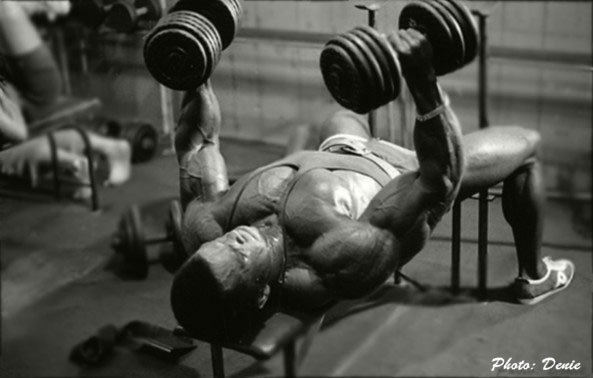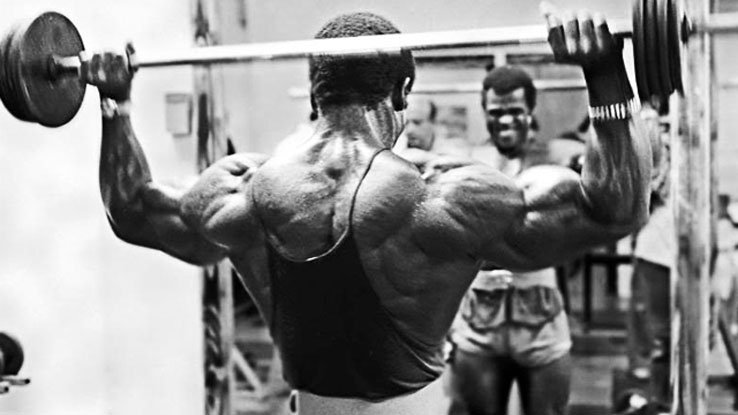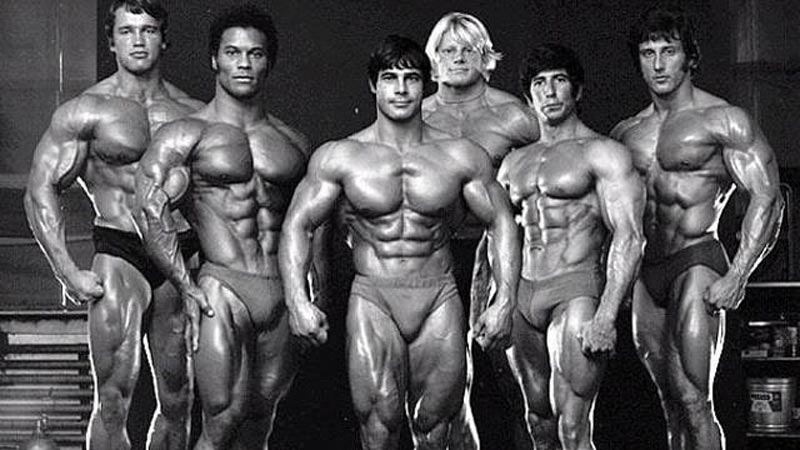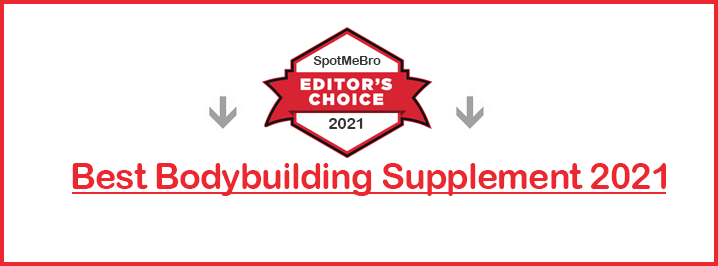
It’s about that time; your body has leveled up and you’re working your way to square up in the boss battle. All this training 4 days a week BS is keeping you from attaining your true form — well, that and some other stuff.
You feel like there’s something that you need to do — something that you’re not quite getting right. It’s scratching at you but you don’t know how to diagnose this itch.
Your gains have slowed down and you don’t wake up sore from your workouts anymore. Getting on to the scale each morning and watching as the same number, morning after morning, flicks at the balls of your gains, torments your soul.
Something needs to change, and quickly!
Which leads me to my next point… you’re reading this article either because you’re curious about the 6-day training split or because you feel like you need a change in your training routine.
Changing the Routine
Change isn’t all that great at times, but when that change is for the better, then it should be embraced and built upon. (Purely talking about training here)
By changing your routine, you’re forcing your body to grow and to adapt to the changed environment, thus incurring gains.

As a beginner to weight training, your body responded fairly quickly to the unfamiliar stress that you had placed it under at first. But as time went on, your progress began slowing down.
You train each muscle group once a week but deep down inside yourself, you feel and know that this isn’t cutting it anymore. You feel like you need to do more than you already are, and you’re exactly right about that!
Introducing the 6-Day Training Split
It’s imperative that I note that a 6-day training split isn’t for the gym newbie. Although a newbie’s recovery time might be faster than that of a seasoned lifter, there are some things that just need to be broken in slowly.
Back in the day, Arnold Schwarzenegger made the switch from a 3-day split to a 6-day training split. His reason for this huge jump? He needed to make more gains!
Going from training 3 days a week to training 6 days a week allowed him to train every muscle group twice a week. By following this training split, Arnold built the physique that made him untouchable during his career as Mr. Olympia.
The Details of the 6-Day Training Split
Next, we’ll run through some important factors that need to be implemented when you decide to make the transition into training 6 days a week.
Again, this isn’t for the weight lifting beginner. By increasing the number of days that you place your body under the stresses of resistance training, your energy expenditure is bound to increase. For that reason, you will also need to start eating slightly more.
More Food
The upside to this is that 1) you get to eat more, 2) you make more gains, 3) you get to eat more.
Calm down. This isn’t a free ticket to eat as much as you want without the repercussions of ingesting more calories than you really need.

Although you’ll have to eat more than you do on your current 3/4/5-day split, you’ll still have to mindful of your calories. That is if you want to keep your gains as lean as humanly possible. If you’re a permabulker, then bulk up, buddy. No one’s judging.
Calories
For the purpose of lean muscle gains, I’d suggest you add 150-250 calories to your current diet. When adding these calories, get 60% from carbs and 20% from protein and fat.
Those increments in macronutrients aren’t big, but they will help to keep the body fat to a minimum.
The Training
This won’t be your run-of-the-mill training program. This routine will consist of high volume training. We’ll be training purely for sarcoplasmic hypertrophy (the hypertrophy associated with gains in muscle size).
There are three things that you need to know about this routine:
- You won’t be training heavy. So leave your ego at the door.
- There will be a lot of sets and a lot of reps. A lot!
- Rest in between sets will only be 30-45 seconds long.

Sounds simple enough, right? Wrong. This will be some degree of self-inflicting bodily harm, but you’ll live and make gains for it.
As you would imagine with a 6-day training split, you’ll be able to train every muscle group twice a week, allowing you to place more stress on your muscles and force them into growth.
Don’t even worry about overtraining. If you’re eating enough food to support your body’s energy expenditure needs and getting 7+ hours of sleep each night, then you’ll be cruising and bruising, week after week.
The Routine
Monday & Thursday — Chest, Arms, Calves
Chest
- Flat Barbell Bench Press — 6 sets, 12-15 reps
- Flat Bench DB Flyes — 4 sets, 15-20 reps
- Incline Barbell Bench Press — 6 sets, 12-15 reps
- Incline DB Flyes — 4 sets, 15-20 reps
- DB Pullovers — 3 sets, 15-20 reps
Arms
- Barbell Curls superset w/ Triceps Pushdowns — 8 sets, 12-20 reps
- DB Curls superset w/ Triceps Dips — 5 sets, 12-20 reps
Calves
- Standing Calf Raises — 8 sets, 15-20 reps
- Seated Calf Raises — 8 sets, 12-15 reps
Tuesday & Friday — Legs, Abs
Quads
- Squats — 8 sets, 12-15 reps
- Leg Press — 6 sets, 12-15 reps
- Leg Extension — 6 sets, 15-20 reps
Hamstrings
- Lying Leg Curls — 8 sets, 15-20 reps
- Standing Leg Curls — 8 sets, 15-20 reps
Abs
- Sit-ups — 8 sets, 20 reps
- Broomstick Twists — 6 sets, 50 reps each side
Wednesday & Saturday — Back, Shoulders, Calves
Back
- Chin-Ups — 4 sets, 12 reps
- Behind-the-Neck Lat Pulldowns — 6 sets, 12-15 reps
- Lat Pulldowns to the Front — 6 sets, 15-20 reps
- Barbell Bent-Over Rows — 4 sets, 12-15 reps
Shoulders
- Behind-the-Neck Barbell Press — 6 sets, 12 reps
- Alternate DB Front Raise — 5 sets, 15-20 reps
- Barbell Upright Row — 4 sets, 12-15 reps
- Cable Lateral Raise — 4 sets, 15-20 reps
Calves
- Standing Calf Raises — 8 sets, 15-20 reps
- Seated Calf Raises — 8 sets, 12-15 reps
Conclusion
I’ll be the first to admit that this routine is pretty high in volume, but that’s okay because you won’t be lifting the heavy-ass weights that you’re used to.

By performing such a high amount of sets and reps, your energy expenditure will increase by a good amount, so don’t forget to increase the calories. When you increase the calories, do check in every other day to see what changes in weight you’re making.
If you are making small increments in weight each week, then you’re on the right track to making gains.
If you’re making small decrements in weight, then that’s an indication of weight loss, which can be a good thing if that’s what you want.
Be sure to get plenty of rest at night and keep yourself fed for each workout and hydrated during it.
Looking for the best bodybuilding supp on the market? Check out our editor’s choice for 2021.








great workout plan thank you
very cool routine thanks for the effort.
Awesome routine just one question when your talking about supersets do you main every exercise 8 sets or 4 sets for both exercises?
Hi Jesper,
Thanks for the props! The original workout calls for 8 sets a piece, however, due to the intense amount of volume the triceps are already under you could try 4 or even 6. It’s up to you and how well your body responds to high-volume training.
Chad
When looks great and cant wait to get started. One question if I can. When it says 12-20 reps does that mean choose a weight you can just about squeeze out 12 reps but qhen you reach 20 you should up the weight.
Thank you in advance
Hey Christian,
Yes, you can sure do that. However, you can also choose a specific rep count, say 14, and up the weight every time 14 becomes easy. The fundamental principle is that the very last rep should feel like a 9/10 – 10/10 RPE.
Thanks bro,
Chad